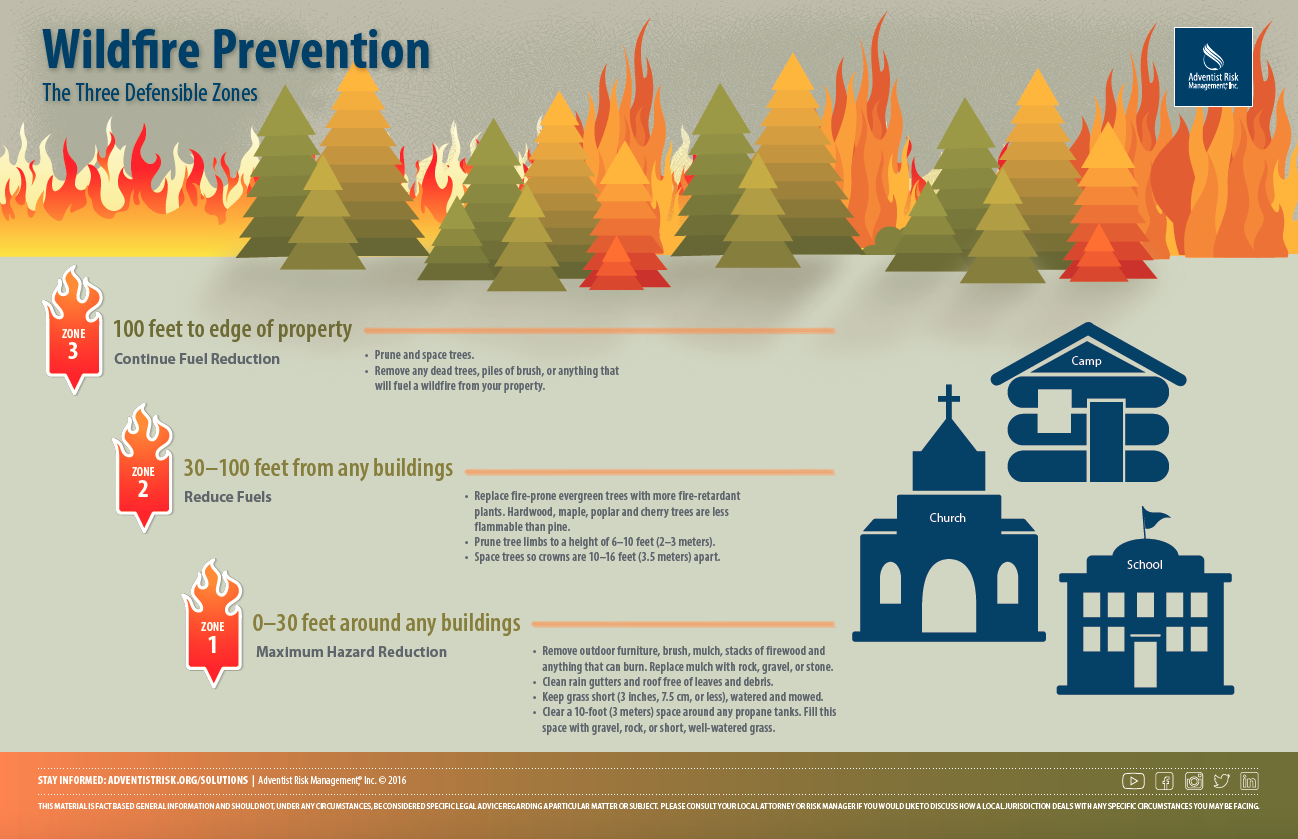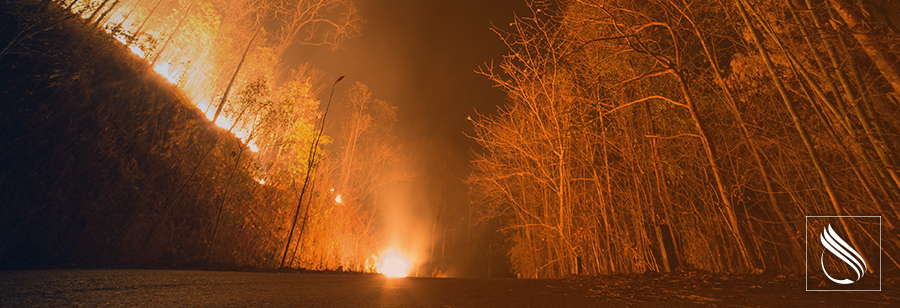Wildfires are a serious and dangerous threat that can affect any ministry in any location. It is a risk that every ministry leader must take into consideration when creating an emergency plan. With any emergency, and especially with wildfires, waiting until the danger is present is too late. We must plan ahead.
Wildfire Facts
Understanding what wildfires are and how they form is key to adequate preparation and mitigation of protecting and preparing your facilities. Ready.gov describes a wildfire as an “unplanned, unwanted fire burning in a natural area, such as a forest, grassland, or prairie.” However, wildfires can occur in any location ranging from national parks to your backyard. While natural events like a lightning strike can start wildfires, humans are often the culprits.Wildfires form when three major elements are present, according to National Geographic:
- Fuel: any flammable material surrounding a fire.
- Oxygen: provided by the air.
- Heat source: something that sparks the fire and raises the temperature of the fuel enough to ignite. These sources include lightning, arson, burning campfires, a downed power line, and even the sun.
So, what can you do as a church leader to minimize the risk of a wildfire starting from your church activities? How can you reduce the amount of material around your church that could become wildfire fuel?
Wildfire Prevention: The Three Defensible Zones
Although we may not be able to control a wildfire starting due to natural elements or the actions of those around us, we can do our best to minimize wildfire fuel and prevent creating a heat source.Always be aware and extra cautious when dealing with campfires or other heat sources—especially if your area is in a dry season.
The dry vegetation can act as the perfect fuel for starting a wildfire. If you are in a high-risk area for wildfires, get in touch with local emergency personnel for more information on guidelines regarding fires.
To minimize wildfire fuel, implement the three defensible zones in your facility surroundings.

Download and share this infographic with your church leaders to begin implementing these defensible zones in your ministry.


